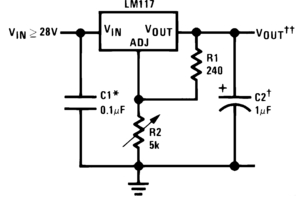aliraza786
Full Member level 4
- Joined
- Nov 10, 2009
- Messages
- 210
- Helped
- 14
- Reputation
- 28
- Reaction score
- 14
- Trophy points
- 1,298
- Location
- Lahore, Pakistan, Pakistan
- Activity points
- 2,914
i have joined a circuit as shown in the datasheet everything works fine but when i conect the load to the output volatge drop from 9 to 3 volts and only variable from 0 to 3 but when i disconeet the load it again goes to 9..i know this problem is due to the current...but how to overcome this......my input volatge is 12.. here is the circuit.


